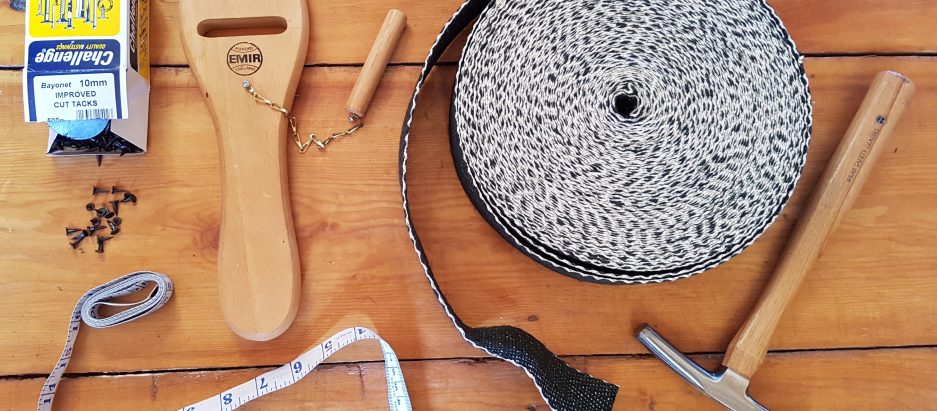After the success of my mini raised beds, I definitely had the DIY bug. I had last Friday booked off work but the plans I had fell through so I was daydreaming on the Thursday about what to fill my day with. I ended up sketching out a plan for a bigger version of the mini raised beds I’d built a couple of weeks before. I googled where to buy timber and before I knew it, I had committed myself to my biggest DIY project yet.
Let me preface this project by saying that I have very little actual experience with woodwork. I may have taught DT as a teacher, but I was very much making it up as I went along. I do, however, have a very optimistic attitude.
To be taken more seriously when I went to buy timber, I spent time with my scale ruler drawing out the design from several aspects, trying to get to grips with what I needed. The space I wanted to fill was a long, thin rectangle of gravel, and I planned to leave the bottom of the bed open to optimise drainage and allow roots to penetrate the ground. I worked out the maximum length and width and hoped for the best from there.

You can see from my drawings that I played around with the exact order of the planks but ended up with the ends being the full width of the box.
Next, shopping! I already own a drill, saw, screws etc so the only things I needed were planks and stick wood to reinforce the corners. I had a very helpful man help me at the shop, who also cut the larger pieces to size for me. I ended up having long sides 2170mm and the ends 420mm. I just about fit them in my car, but the long ones did keep hitting my hazards lights on the way home..
On arriving home, I was met with heating engineers upgrading my boiler system with my landlord so immediately I felt more than a little pressure to build everything whilst looking like I knew what I was doing!
As my pieces were cut from 3600mm lengths, one of my long sides was made up of two shorter pieces so first I joined them using the shorter of two offcuts which you can see in some of the pictures below. Then I was ready to start assembling.
I cut the stick wood to 300mm, the width of two planks. Then I laid two planks side by side and clamped the stick wood to the ends. Finally I used 4, 40mm screws to attach the whole lot together.
I repeated for the other pair, and then started adding the ends. As I don’t own benches, or more than one clamp, this was quite tricky. I had to have the sides upright, and use my knees to hold them steady.

Again, I made two identical pairs, and then flipped one around to make the box. It was at that point I realised just how big of a planter I was making. Once attached, I stained it with the same colour I used on my mini raised beds so that everything would match.
This whole build, from leaving to go buy the wood to finishing the first coat of stain took just over three and a half hours, not bad for an inexperienced DIYer!
After some advice from my personal structural engineer (my dad), I later added some of the leftover stick wood as a support from the inside to prevent bowing from the weight of the soil.

The following day, I started filling the planter with soil. After expert advice from my personal gardening guru (my mum), I did several layers. I had a 40 litre tough trug and an unsightly pile of soil dug out of a trench a little way from my house. The first layer was made up of six loads of soil. I turned it over to loosen it in the trug, and again once it was in the planter. Who needs crossfit when you need to move soil and don’t have a wheelbarrow?!
Than I added a layer of muck, spent compost and leaf mould. My mum had brought this up with her when she came to visit and I supplemented it by emptying out other pots and planters that I am planning on reusing this year. I then added another five loads of soil and covered the whole lot in new compost. I had watered each layer as I went to ensure it was well enough hydrated for me to start planting.
The first things I put in were two fuchsias that had been languishing in pots for the last couple of years, in desperate need of nutrients and space. Next I added a row of bamboo canes to the back of the planter and put in half of the mutant sweet peas that have been growing like crazy in my house since they germinated a few weeks ago. Finally (for now), I scattered some wild flower seeds over the remaining compost and gave everything a good water. In time, I’m hoping for sweet peas growing up the bamboo, wildflowers growing underneath them and fuchsias at each end. I also put a little cutting of a variegated creeper in the compost to see if it will take, and if it does, I hope it will fill some of the gaps.
With the weather getting nicer, I’m hopeful I can get on with more upholstery now. I’ve run out of ways to change my garden for now, although there is another patch that’s crying out for another raised bed..













